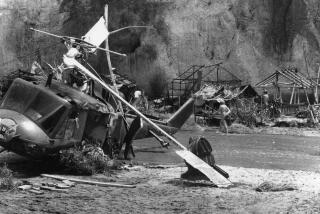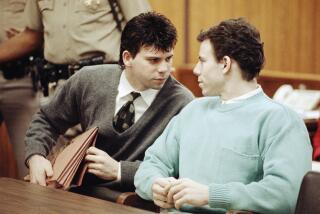Commentary : Perspectives On The Denny Verdicts : Facts, Lies and Videotape : What the camera sees isn’t true to life, can’t ‘tell’ us what happened; why are we so quick to trust it in the pursuit of justice?
- Share via
Many wonderful things have been made possible by videotape, but an ability to lead us to sound judgments seems not to be one of them. Between the baseball games of the World Series and the verdicts in the Reginald Denny beating trial, we’re repeatedly reminded these days not to think of “going to the tape” as the way to answer a question. The problem is, the advertising and entertainment industries spend all their time trying to persuade us that seeing is believing. That leaves the justice system (not to mention umpires and referees) with an uphill fight whenever their conclusions are at variance with what every armchair witness feels sure he saw with his own eyes.
What do members of the adjudication Establishment know about videotape that makes it apparently easy for them to disregard its evidence, while the rest of us (as the prosecution put it in the beating trial) have those images “burned into our brains”? Why is a close call at third base decided by the umpires on the field and not by a squad of technical gnomes studying a bank of video monitors in a booth? Why does the NFL disregard the replays while the rest of us hoot and holler at the balletic slow-motion re-enactments of what happened? And why do the horrifying images taped at Florence and Normandie seem to have counted for so little in this week’s jury verdicts?
The answer must lie in the limits of videotape as evidence. We tend most easily to forget that the camera focuses,the camera frames, and the tape can only repeat what it has already shown us before.
Parallax--the optical phenomenon that makes the relations between objects look different from different angles and positions--is completely hidden from the viewer of a two-dimensional video screen. Knowing about parallax, the home plate umpire consistently defers to the first base umpire to decide if the batter “went around.” But the lone video camera defers to no one in giving us a sense that we have “seen” an event. The camera’s focus seems final, although it may be false.
In framing an event, the camera detaches it from its context--whereas the context may be where its human meaning actually resides. Telephoto lenses in helicopters hovering above the city detached and isolated Reginald Denny and his assailants from the massive civil disturbances going on about them. Thus framed, the images implied assumptions about intent and state of mind that are crucial to the law, and that also may have been false.
The jury, in its deliberations, presumably sought to restore the context of chaos and lawlessness that the “telecopter” images had cropped. Yet those of us who are forced to watch those cruel pictures over and over in our living rooms “know” what we have seen.
Socrates used to complain that the act of writing things down was dangerous, because a written document, when “asked” what it meant, could only repeat itself endlessly. He much preferred to conduct a spoken dialogue with a living, breathing, thinking individual. This wonderful stuff, videotape, which so convincingly creates the illusion of movement while reproducing life’s sounds, is doubly guilty of Socrates’ charge. What was going on in those people’s minds? The tape cannot tell us, but it can show their destructive behavior, over and over. The tape seems to move, and yet in truth it doesn’t move at all.
Understanding, compassion, justice, judgment--these are processes that require inquiry, thought and the ability to delve deeper, not turn in endless repetitive circles on the surface of events. What’s on tape has the power to hold our eyes, but it is deaf and mute before our questions, which only humans can answer.
Here, then, is further proof of those limits, where the hidden static nature of video leaves a gap between public opinion and the findings of justice. Reginald Denny, the actual person, was moved during the trial to embrace the mothers of his accused assailants. The hug he gave was a beautiful gesture of sympathy and compassion, but the videotaped images of the assault--although we think of them as “moving”--are fixed, they’re stuck and they’ll never hug anybody.
More to Read
Go beyond the scoreboard
Get the latest on L.A.'s teams in the daily Sports Report newsletter.
You may occasionally receive promotional content from the Los Angeles Times.










